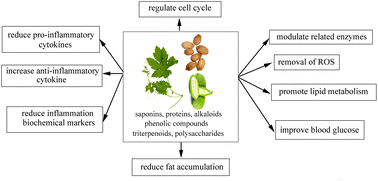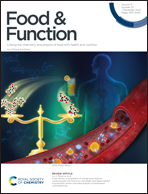Immunomodulatory effects and associated mechanisms of Momordica charantia and its phytochemicals
Abstract
Momordica charantia L. (M. charantia), which is a member of the Cucurbitaceae family and widely distributed in tropical and subtropical regions, has been consumed as a vegetable and also used as herbal medicine for thousands of years worldwide. M. charantia has received great attention in biological and biomedical research due to its remarkable antidiabetic/hypoglycaemic, anti-inflammatory, antioxidant, antiviral and antitumour activities both in vivo and in vitro. Numerous studies have revealed that the typical health-promoting activities of M. charantia are mainly attributed to its phytochemicals including saponins, proteins/peptides, phenolic compounds, alkaloids, triterpenoids and polysaccharides. In particular, it has been attested that there is a strong relationship between the antidiabetic activity and the saponins and proteins of M. charantia. In recent years, studies on the immunoenhancing and immunostimulating effects of M. charantia have attracted much attention and made significant progress. Therefore, this review focuses on the immunomodulatory effects and associated mechanisms of M. charantia and its bioactive phytochemicals. The clinical applications of M. charantia in immune-related diseases are also discussed, aiming to broaden the exploration of M. charantia as a functional food.

- This article is part of the themed collection: Food & Function Review Articles 2022


 Please wait while we load your content...
Please wait while we load your content...